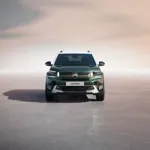However, government agreement on a Van Enhancement scheme removed the need to seek type approval on basic vehicle modifications, such as ply-lining and racking.
“It was a case of working with my lease provider and my converter, going through specification line by line, looking at what was in and what was out of scope,” says McAtear.
“It was a lot of work but my first batch of vehicles have now gone through without any problems.”
There has been a knock-on benefit for utilisation. Having fewer variants means it is easier to move vehicles between business units. Removing any unnecessary roof equipment has also lowered emissions.
Average CO2 emissions are 159g/km (down from 161g/km) and McAtear is targeting 155g/km by the end of the year.
Eco versions, such as the Volkswagen Bluemotion or Ford Econetic, are always chosen upon replacement.
McAtear has considered using compressed natural gas (CNG) and liquefied natural gas (LNG) vehicles, but the infrastructure costs were prohibitive.
“We would need to store the gas, either at a gas filling station on site or by sharing a facility with another company,” says McAtear. “For the number of vehicles I was looking at, it wasn’t worth it.”
Five electric Renault Kangoo ZE vans joined the fleet in May this year.
McAtear was able to build the business case for electric vans using data from telematics. The data showed that some engineers never travelled more than 80 miles a day, making them ideal candidates for an EV.
“The drivers are surprised by how car-like they are,” McAtear says.
“As each week goes by, the range slightly increases as they are getting braver. It took only one day of forgetting to charge them up before they got into the habit of charging them overnight.”
She is also introducing video handovers for all new commercial vehicles. “The video handovers are to make sure messages are consistent and to try and minimise downtime,” she says.
Integrating telematics data with other risk management tools to give a more rounded picture of risk is also on the agenda.
Telematics was originally introduced to change the way E.On operated by improving route planning and fault code analysis.
Initial benefits were improvements in fuel economy, a reduction in over-time claims and improved job expectancy.
“We have also found softer benefits such as improved relationships between route planners and the drivers,” McAtear says.
It has helped drivers tackle spurious parking claims and offered protection for lone workers. In one instance, E.On was able to send for help for a driver who had an accident but was unable to use his phone.
But there are downsides.




















Miss Easton - 14/02/2015 11:43
Vans parking in front of my house so I cannot park my car, this is very inconvenient for us. Van drivers should be more considerate and park outside where they live not outside my house. Once its parked its there all weekend or however long they are not working if they are on holiday. Vehicle reg is YC62 WHX. Please inform Lorna McAtear so that employed vehicle users are more considerate it does not portray good customer service.